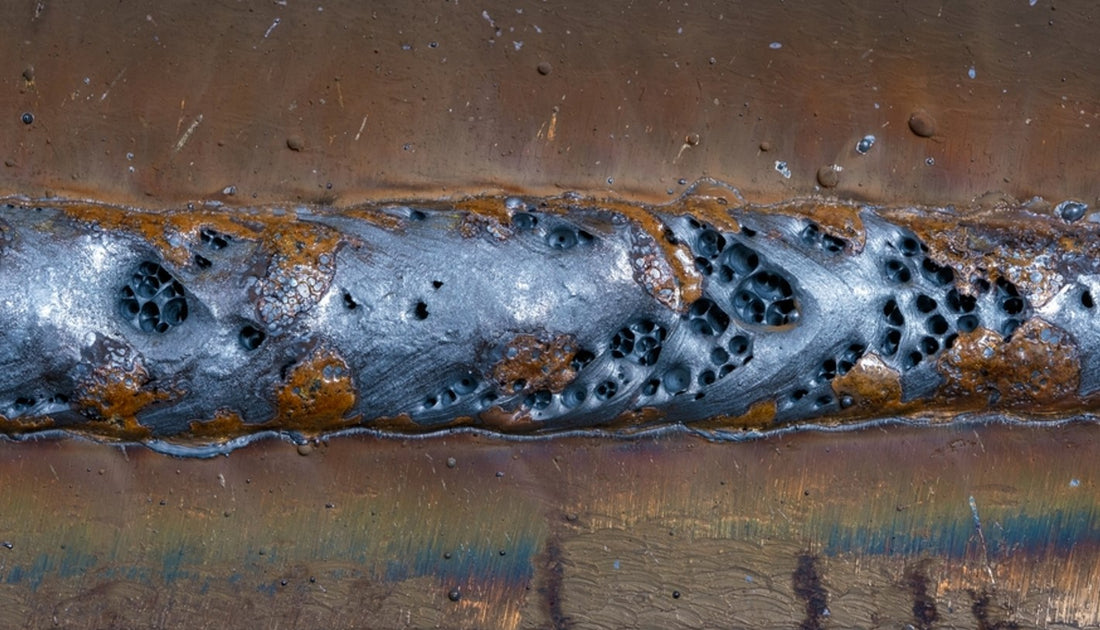Recognizing What is Porosity in Welding: Causes and Solutions
Recognizing What is Porosity in Welding: Causes and Solutions
Blog Article
The Science Behind Porosity: A Comprehensive Overview for Welders and Fabricators
Comprehending the intricate mechanisms behind porosity in welding is critical for welders and makers pursuing remarkable craftsmanship. As metalworkers dig right into the midsts of this sensation, they discover a globe governed by numerous factors that affect the formation of these tiny spaces within welds. From the structure of the base materials to the ins and outs of the welding process itself, a wide range of variables conspire to either intensify or alleviate the presence of porosity. In this comprehensive guide, we will untangle the science behind porosity, exploring its effects on weld high quality and unveiling advanced strategies for its control. Join us on this journey with the microcosm of welding flaws, where accuracy meets understanding in the pursuit of flawless welds.
Recognizing Porosity in Welding
FIRST SENTENCE:
Exam of porosity in welding reveals critical understandings right into the honesty and top quality of the weld joint. Porosity, characterized by the visibility of dental caries or gaps within the weld metal, is a common problem in welding procedures. These gaps, otherwise effectively attended to, can endanger the structural honesty and mechanical homes of the weld, resulting in prospective failures in the ended up product.

To spot and evaluate porosity, non-destructive testing methods such as ultrasonic testing or X-ray examination are often utilized. These strategies allow for the identification of inner problems without jeopardizing the stability of the weld. By assessing the dimension, form, and distribution of porosity within a weld, welders can make educated decisions to improve their welding procedures and accomplish sounder weld joints.

Aspects Affecting Porosity Formation
The event of porosity in welding is affected by a myriad of factors, varying from gas protecting performance to the intricacies of welding criterion settings. One important aspect adding to porosity development is inadequate gas protecting. When the protecting gas, normally argon or carbon dioxide, is not successfully covering the weld pool, climatic gases like oxygen and nitrogen can pollute the molten steel, bring about porosity. Furthermore, the cleanliness of the base materials plays a considerable role. Pollutants such as corrosion, oil, or dampness can evaporate throughout welding, producing gas pockets within the weld. Welding specifications, consisting of voltage, current, travel rate, and electrode kind, also impact porosity formation. Using incorrect settings can generate excessive spatter or warmth input, which subsequently can lead to porosity. In addition, the welding method employed, such as gas steel arc welding (GMAW) or secured steel arc welding (SMAW), can influence porosity development because of variants in warm circulation and gas insurance coverage. Understanding and managing these elements are important for minimizing porosity in welding operations.
Impacts of Porosity on Weld High Quality
Porosity development significantly compromises the architectural honesty and mechanical buildings of welded joints. When porosity is present in a weld, it creates voids or dental caries within the product, lowering the general toughness of the joint. These spaces work as stress concentration points, making the weld more susceptible to fracturing and failing under lots. The existence of porosity also damages the weld's resistance to deterioration, as the trapped air or gases within deep spaces can react with the surrounding setting, causing degradation in time. In addition, porosity can prevent the weld's capability to endure stress or effect, further threatening the overall high quality and reliability of the bonded structure. In important applications such as aerospace, auto, or structural constructions, where safety and security and longevity are critical, the destructive effects of porosity on weld high quality can have severe consequences, highlighting the importance of lessening porosity via proper welding methods and treatments.
Methods to Lessen Porosity
Furthermore, using the ideal welding criteria, such as the proper voltage, existing, and travel rate, is important in avoiding porosity. Preserving a regular arc size and angle throughout welding likewise assists reduce the possibility of porosity.

Additionally, selecting the right protecting gas and keeping proper gas circulation prices are vital in minimizing porosity. Utilizing the appropriate welding strategy, such he has a good point as back-stepping or employing a weaving activity, can also help distribute warmth evenly and minimize the opportunities of porosity development. Finally, guaranteeing correct ventilation in the welding environment to get rid of any kind of possible sources of contamination is crucial for attaining porosity-free welds. By carrying out these methods, welders can efficiently lessen porosity and generate high-quality welded joints.

Advanced Solutions for Porosity Control
Implementing sophisticated innovations and innovative techniques plays a pivotal duty in attaining exceptional control over porosity in welding procedures. Additionally, employing innovative welding methods such as pulsed MIG welding or modified environment welding can additionally aid reduce porosity concerns.
Another sophisticated solution entails making use of advanced welding tools. Making use of devices with integrated functions like waveform control and innovative look at this website power resources can boost weld high quality and decrease porosity dangers. In addition, the implementation of automated welding systems with exact control over parameters can significantly minimize porosity flaws.
Additionally, including sophisticated surveillance and evaluation technologies such as real-time X-ray imaging or automated ultrasonic screening can help in discovering porosity early in the welding process, click here for info enabling for prompt corrective actions. In general, integrating these sophisticated options can substantially enhance porosity control and improve the total quality of bonded components.
Final Thought
In verdict, comprehending the science behind porosity in welding is necessary for welders and fabricators to create high-grade welds - What is Porosity. Advanced remedies for porosity control can even more improve the welding process and guarantee a strong and reputable weld.
Report this page